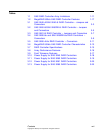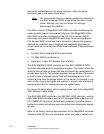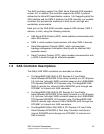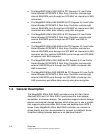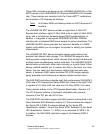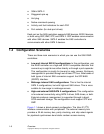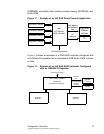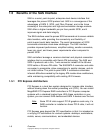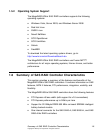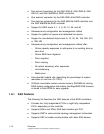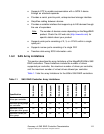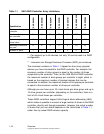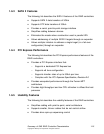
1-6 Overview
Copyright © 2009 by LSI Corporation. All rights reserved.
• 3Gb/s SATA II
• Staggered spin-up
• Hot plug
• Native command queuing
• Activity and fault indicators for each PHY
• Port selector (for dual-port drives)
Each port on the SAS controllers supports SAS devices, SATA II devices,
or both using SSP, SMP, STP, and SATA II. SSP enables communication
with other SAS devices. SATA II enables the SAS controllers to
communicate with other SATA II devices.
1.4 Configuration Scenarios
There are three main scenarios in which you can use the SAS RAID
controllers:
• Low-end, internal SATA II configurations: In this configuration, use
the RAID controller as a high-end SATA II compatible controller that
connects up to eight drives either directly or through a port expander.
This configuration is mostly for low-end or entry servers. Enclosure
management is provided through out-of-band I
2
C bus. Side bands of
both types of internal SAS connectors support the SFF-8485
(SGPIO) interface.
• Midrange internal SAS configurations: This is like the internal
SATA II configurations, but with high-end SAS drives. This is more
suitable for low-range to midrange servers.
• High-end external SAS/SATA II configurations: This configuration
is for external connectivity using SATA II drives, SAS drives, or both.
External enclosure management is supported through in-band,
SCSI-enclosed storage. The configuration must support STP and
SMP.
Figure 1.1 shows a direct-connect configuration. The Inter-IC (I
2
C)
interface communicates with peripherals. The external memory bus
provides a 32-bit memory bus, parity checking, and chip select signals
for pipelined synchronous burst static random access memory




